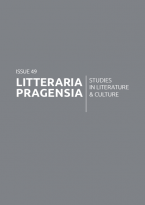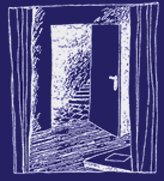
|
25.49 The Worldliness of Philip RothEdited by: Christopher E. Koy Volume: 25 Issue: 49 July 2015 |
Contents
|
Christopher E. Koy
The Worldliness of Philip Roth: An Introduction
|
1 |
|
Stanislav Kolář
Philip Roth and Czechoslovakia
show abstract
This article, introduced by my personal interview with the Jewish American writer Philip Roth, examines the roots of Roth's interest in Czechoslovakia and the ways in which the country - and Czech characters - are reflected in his fiction. It focuses on three works in which Roth depicted Czechoslovakia or Czech immigrants - The Prague Orgy, The Professor of Desire and Deception. Roth's interest in the Czech nation, and in Eastern and Central Europe generally, had both personal and political dimensions, which are voiced to the greatest extent in the novella The Prague Orgy; this work compares uprooted Czech immigrants in New York with the persecuted dissident artists and intellectuals of Prague in the 1970s. On the one hand, the despair and escapism of those Czechs who decided to remain in an internal opposition to the communist regime is determined by their deprivation of freedom, while on the other hand Roth's account of the life of Czech émigrés in the United States is also painted in dark colors due to the novelist's accentuation of their displacement and sense of loss. While the novella The Prague Orgy is entirely devoted to Czechs, in The Professor of Desire and Deception the portrayal of Czech characters has only an episodic character. However, even in these two works, Roth managed to present the characters' dramatic personal life stories in a close connection with the political situation in their motherland.
|
6 |
|
Aristi Trendel
The Work of Creation in Philip Roth's The Anatomy Lesson and John Updike's Bech Stories
show abstract
Philip Roth and John Updike have both capitalized on the creative act and its creator in their work. In Roth's Zuckerman trilogy, The Anatomy Lesson mostly focuses on the writer's block and the creative process; Roth sets up a picture of crisis and after reviewing the process of writing through the prism of pain and play, he offers a wary resolution through the promise of a new book for his playful writer in pain. Writing appears as a deadly serious game. Likewise, through his character, Henry Bech, the chronically blocked writer, in his Bech story cycle, Updike looks into the multi-faceted writer's condition with a special focus on play. This paper examines the work of creation as the main issue in Roth's novel and Updike's Bech stories. Didier Anzieu, Johan Huizinga and Roger Caillois provide some of the theoretical framework for the analysis of the novel and the story cycle.
|
22 |
|
Petr Anténe
Racial Conflicts in the Campus Novel of the Early 2000s: Philip Roth's The Human Stain and Zadie Smith's On Beauty
show abstract
This article analyses Philip Roth's The Human Stain (2000), alongside Zadie Smith's On Beauty (2005), as campus novels that respond to wider socio-political issues. In particular, both texts reflect racial anxiety on the American campus at the turn of the century. The Human Stain focuses on Coleman Silk, a classics professor at the fictional Athena College who is, towards the end of his career, unjustly charged of using a racial slur against African Americans in the classroom. Ironically, the novel reveals that Silk himself is an African American that has been passing for a Jewish American for his whole academic career. Similarly, On Beauty deals with two art professors fighting on the opposite sides of the Culture Wars at the fictional Wellington College. While the liberal one is a white Englishman who has married an African American woman, his conservative opponent is an anglicized Trinidadian visiting lecturer who condemns affirmative action. Thus, both novels illustrate not only the complexity of how race is perceived in academia, but especially the problematic attitudes to race both individuals and institutions embrace.
|
33 |
|
Christopher E. Koy
Half-Jew, Half-Gentile: The "Very Very Screwed Up" Child in The Family Carnovsky and American Pastoral
show abstract
In this article I trace numerous similarities in plot, setting, characters and motif in two novels. The approaching European war and holocaust in Israel Joshua Singer's novel The Family Carnovsky and the brutality of the Vietnam War of Roth's novel American Pastoral serve as the dreadful conditions which trigger the half-Jewish teenage child in each novel to revolt against the assimilating Jewish father figure and commit subversive acts against the U.S. government. I argue that the numerous similarities are not merely coincidental in this intertextual study, but that Roth has most likely updated Singer's depiction of a pre-WWII refuge family to America's next major crisis, namely the Vietnam era in the 1960s and 1970s.
|
47 |
|
Mike Witcombe
Counter-Reading Kepesh: Textual Subversion in Philip Roth’s The Dying Animal
show abstract
Philip Roth's 2001 novella The Dying Animal has attracted an increasing level of critical attention in recent years. Much of the resultant research has attempted to grapple with the distinctive manner in which Roth's narrator, David Kepesh, describes his experiences - often as a counterpoint to initial scepticism over the value of the text itself. Following on from this trend, this essay argues that Roth's novella can be reinterpreted as a multifaceted, even anti-misogynist text through a close reading of Roth's use of language and characterization. Focusing first on how Roth uses terms of address in the novella and concluding with an analysis of several minor characters, it becomes possible to detect methods of "counter-reading" which Roth's text actively encourages. Through a complex depiction of his narrator-protagonist's wilful ignorance, Roth consistently undermines the claims to authority that his character appears to be making - playfully subverting his own text as he does so.
|
60 |
|
David Lukeš
,
Hana Ulmanová
Passing as a Jew in Roth’s American Pastoral and The Human Stain
show abstract
The present article seeks to explore the ways in which Jewish identity is discursively deployed in two novels by Philip Roth: American Pastoral (1997) and mainly The Human Stain (2000). Calling upon a framework of philosophical approaches to identity structured around the key terms of otherness, performativity and ethics, culled from theoretical writings by Judith Butler, Paul Ricœur and Emmanuel Lévinas, the article analyzes how writing about Jews in America functions as a political act, initially perhaps against the author's will, and engages the terms of "majority" and "minority." The central topos of otherness is viewed as inaccessible and irreducible (Lévinas) but endowed by characters with powerful fictions, both appealing and repulsive, foci of desire and derision. In relation to the Jewish protagonists, black otherness is seen as a crucial site of imaginative investment which informs the creation of their individual Jewish-American selves. These selves are performed in discourse alternately with and against their discursive precedents, underscoring the aspect of performativity that Butler calls citationality and establishing an intricate dialectical pattern of repetition and opposition. Jews are conceived as disrupting the binary (black and white) structuring ideology of the American racial imagination. Jewishness is apprehended through blackness, foregrounding the notion of minority and black-Jewish relations. By paying detailed attention to the protagonist of The Human Stain, a black man named Coleman Silk and passing as a Jew, socially-enforced aspects of Jewishness in contemporary America are pointed out. These limitations and drawbacks emerge as ironic because of the duality of Coleman's identity: the accusations made against him on the basis of his assumed Jewish identity would hold no sway over him if he revealed his blackness. The intergenerational boundary is identified as a crucial limit, in the vicinity of which Jewish attitudes, beliefs and longings are re-defined and re-appropriated by the younger generation. Parents, especially fathers, represent a heritage full of ambiguous meaning, which is contentious because highly personal and emotionally charged. The article follows Roth's protagonists in their struggle to find their own way through this labyrinth of significations laying a claim on them, as they self-consciously negotiate, through trial and error, an ethical position which would allow them to uphold their selfhood without trampling otherness.
|
73 |
|
Valérie Roberge
Kierkegaard's The Seducer's Diary and Roth's The Counterlife, Or, How Zuckerman Can Help Explain Johannes
show abstract
This essay examines the parallels between Kierkegaard's The Seducer's Diary (1843) and Roth's novel The Counterlife (1986). Before investigating the similarities between these two works, two major problems are explored that arise in every study related to the influential Danish Existentialist: his numerous pseudonyms and his status as an anti-philosophical thinker.
|
106 |
|
Review of
Howard Gaskill
The Reception of Ossian in Europe
London: Continuum, 2004. 452 pp.
|
115 |
|
Review of
Murray Pittock
The Reception of Sir Walter Scott in Europe
London: Continuum, 2006. 396 pp.
|
119 |
|
Review of
Peter Jones
The Reception of David Hume in Europe
London: Bloomsbury, 2013. 412 pp.
|
121 |
|
Review of
Murray Pittock
The Reception of Robert Burns in Europe
London: Bloomsbury, 2014. 348 pp.
→ Colin S. Clark, Volumes on Scottish Authors in the Continuum Series "Reception of British and Irish Authors in Europe" |
124 |


